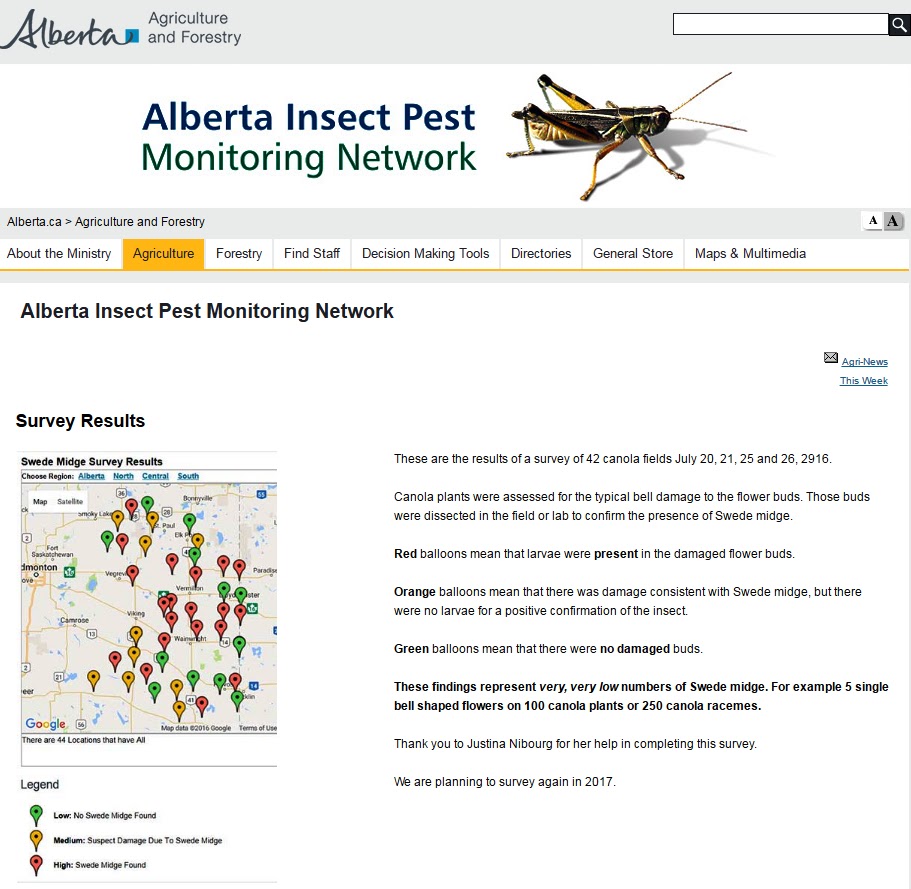On the Canadian prairies, lygus bugs (Heteroptera: Miridae) are normally a complex of several native species usually including Lygus lineolaris, L. keltoni, L. borealis, L. elisus although several more species are distributed throughout Canada. The species of Lygus forming the “complex” can vary by host plant, by region or even seasonally.
Lygus bugs are polyphagous (i.e., feed on plants belonging to several Families of plants) and multivoltine (i.e., capable of producing multiple generations per year). Both the adult (Fig. 1) and five nymphal instar stages (Fig. 2) are a sucking insect. Adults overwinter in northern climates. The economic threshold for Lygus in canola is applied at late flower and early pod stages.
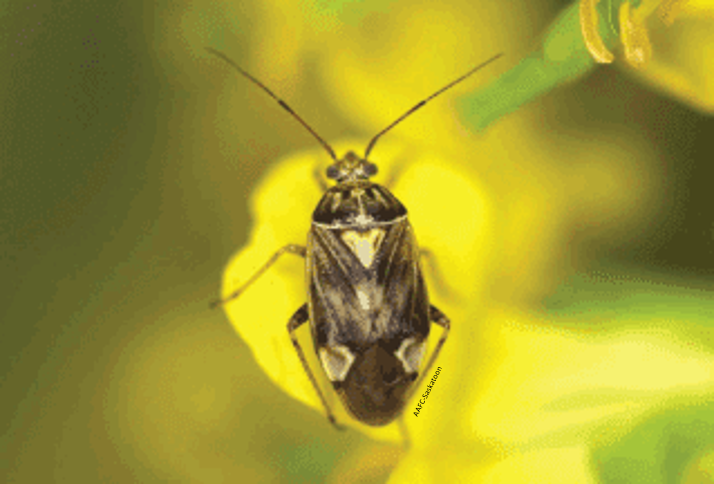
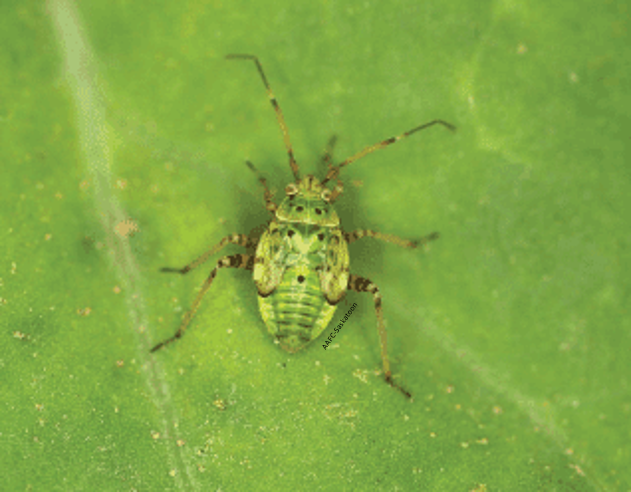
Damage: Lygus bugs have piercing-sucking mouthparts and physically damage the plant by puncturing the tissue and sucking plant juices. The plants also react to the toxic saliva that the insects inject when they feed. Lygus bug infestations can cause alfalfa to have short stem internodes, excessive branching, and small, distorted leaves. In canola, lygus bugs feed on buds and blossoms and cause them to drop. They also puncture seed pods and feed on the developing seeds causing them to turn brown and shrivel.
Scouting tips to keep in mind: Begin monitoring canola when it bolts and continue until seeds within the pods are firm. Since adults can move into canola from alfalfa, check lygus bug numbers in canola when nearby alfalfa crops are cut.
Sample the crop for lygus bugs on a sunny day when the temperature is above 20 °C and the crop canopy is dry. With a standard insect net (38 cm diameter), take ten 180 ° sweeps. Count the number of lygus bugs in the net. Sampling becomes more representative IF repeated at multiple spots within a field so sweep in at least 10 locations within a field to estimate the density of lygus bugs. In fact, sampling is most accurate when repeated at a total of 15 spots within the field. Samples can be taken along or near the field margins. Calculate the cumulative total number of lygus bugs and then consult the sequential sampling chart (Figure 3).

If the total number is below the lower threshold line (Fig. 3), no treatment is needed. If the total is below the upper threshold line, take more samples. If the total is on or above the upper threshold line, calculate the average number of lygus bugs per 10-sweep sample and consult the economic threshold tables (Tables 1 and 2).
The economic threshold for lygus bugs in canola covers the end of the flowering (Table 1) and the early pod ripening stages (Table 2). Once the seeds have ripened to yellow or brown, the cost of controlling lygus bugs may exceed the damage they will cause prior to harvest, so insecticide application is not warranted. Consider the estimated cost of spraying and expected return prior to making a decision to treat a crop.
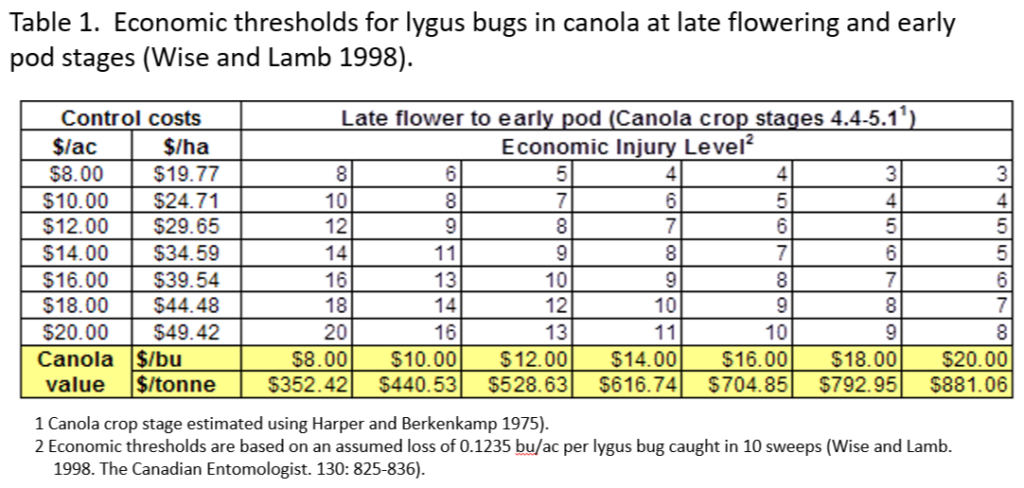
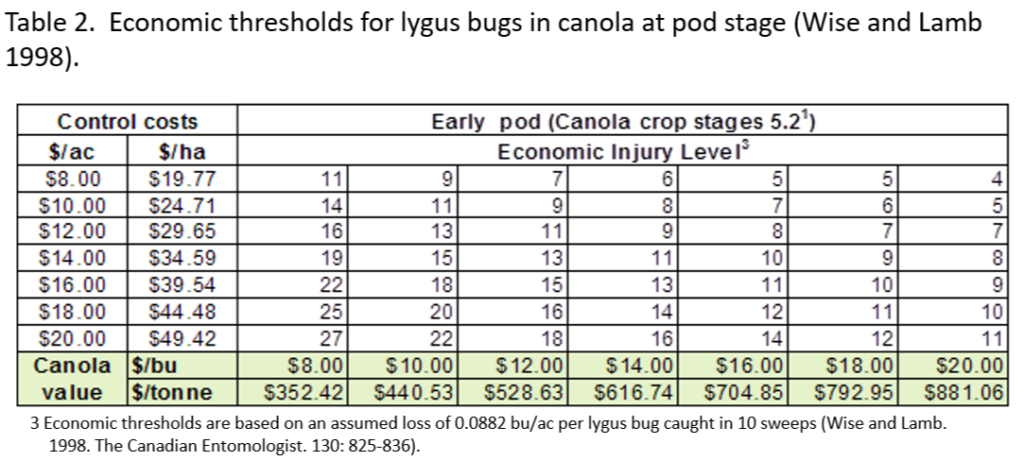
Remember that insecticide applications at bud stage in canola have not been proven to result in an economic benefit in production. The exception to this is in the Peace River region where early, dry springs and unusually high densities of lygus bug adults can occasionally occur at bud stage. In this situation, high numbers of lygus bugs feeding on moisture-stressed canola at bud stage is suspected to result in delay of flowering so producers in that region must monitor in fields that fail to flower as expected.
How to tell them apart: The 2019 Insect of the Week’s doppelganger for Wk 15 was lygus bug versus the alfalfa plant bug while Wk 16 featured lygus bug nymphs vs. aphids! Both posts include tips to to discern the difference between when doing in-field scouting!
Biological and monitoring information related to Lygus in field crops is posted by the provinces of Manitoba or Alberta fact sheets or the Prairie Pest Monitoring Network’s monitoring protocol. Also refer to the Lygus pages within the new “Field Crop and Forage Pests and their Natural Enemies in Western Canada: Identification and management field guide” – both English or French versions are available.

